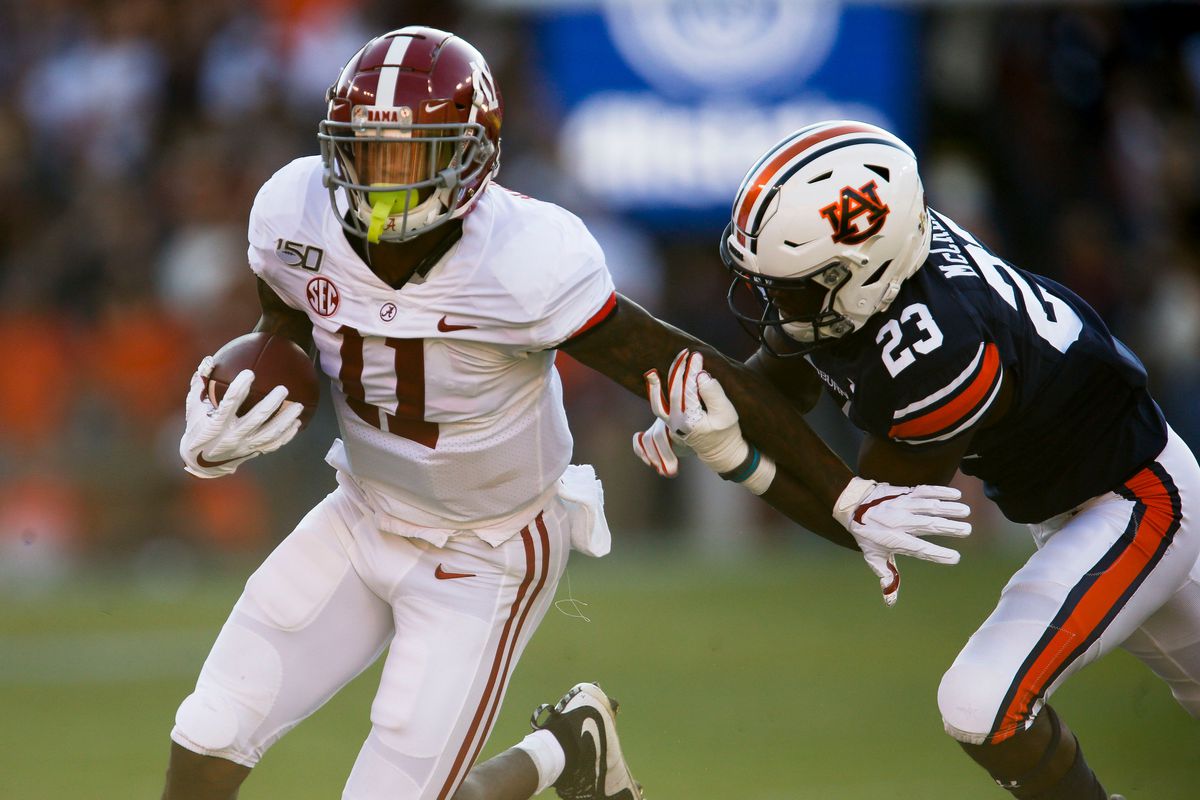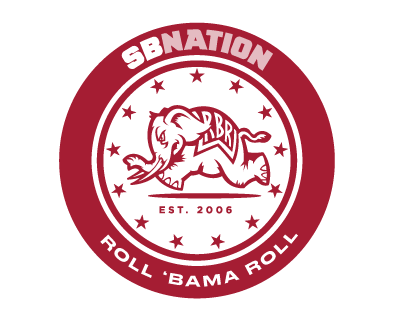
It’s been a busy offseason for the Grand Poobahs of the game. First, the NCAA let the PAC 12 and Rose Bowl demolish two-year-long expansion talks, leaving everyone pissy about the outcome (except for the P12, who tried to Baghdad Bob the matter; and the SEC, who are doing just fine down with the status quo, TYVM).
And now, nine rules changes have flown through the pertinent committees, and are coming to a campus near you this Fall.
I’ll hit on these briefly.
1. #BarnCheating: The first and most contentious, is the rash of fake injuries that have besieged the game of late. Though, feel free to ask anyone who has watched an Auburn or LSU game in the last decade: It may just now be reaching the national consciousness, but it’s long been a problem at certain programs.
Despite this being so obviously an area of concern that it was targeted by Director of Officiating, Steve Shaw, the NCAA has effectively let a handful of whiners dictate the outcome of games by doing nothing.
Worse than nothing, the new rule does what the NCAA has done a lot of lately, on everything from trans athletes to COVID — pretends to care but punts the matter to the conferences. “Conferences and school will submit a report to the national coordinator of officials, who will provide feedback to the conference. Then conference or school would then levy any additional punishment,” and “any penalties levied would be up to the conference office or school involved.”
So, nothing, in other words, but let’s pretend we did something. That’s the most Gutless Administrator thing ever. Hell, it sounds like the UN. This is the outstanding leadership that Mark Emmert is getting paid three-million dollars a year for, eh?
2. Speaking of #BarnCheating, Auburn’s entire coverage philosophy has been derailed with one simple sentence: “Defensive holding will remain a 10-yard penalty but will always carry an automatic first down.”
That is a big one. Before, there was absolutely no incentive to not hold in long yardage situations: 2nd and 11? Grab some jersey, and hold on to your butts for just one more snap. 3rd and 16? Yank a dude to the ground off the snap, and try again the next play.
It became very common to see some teams holding on practically every downfield target. The thinking being they can’t or won’t call it every time, and if they do, it’s not necessarily an automatic first down. The calculus of the latter changes somewhat now.
And the strategy has really worked, too. Some defensive coordinators are notorious for holding-as-coverage, among them those old school Saban DCs, particularly Will Muschamp and Kevin Steele. In 2014, Auburn was 54th in pass efficiency defense. With Muschamp’s arrival, Auburn shot all the way up to 31st. The next five years under Steele, who ran an even grabbier defense, Auburn finished in the Top 20% of DPE for four of the next five seasons. With Kevin Steele’s departure in 2021, and despite a bevy of returning starters, Auburn fell to 76th in DPE.
#Auburn CB Roger McCreary might have shorter arms, but he’s also quick and technically-sound. Had a good day of practice. pic.twitter.com/siNiK3tAh7
— Dane Brugler (@dpbrugler) February 2, 2022
#SoundDefense
Get ready for a lot of laundry this year, particularly among the more aggressive teams and teams with younger or inexperienced corners (and, yes, I fully expect Alabama to draw more than its fair share).
Now, if only they would make DPI a spot-foul...one of the few things the Shield gets right.
—
3. Perhaps Alabama will stop having their knees and careers targeted by inferior opponents.
When I was researching this piece, I came across a very cogent analysis of the new rules governing blocking below the waist. They are exceptionally Byzantine, and change a lot of core plays for the flexbone, including a player going in motion and then blocking below the waist (BBW, heh), after the snap.
It is in-depth, but worth quoting in its entirety, and I want to single out and credit “LegacyZebra” for as good an explanation as you’ll find:
The first major change is that nobody is allowed to block below the waist outside the tackle box. Nobody. Ever. It’s important to note that the tackle box disintegrates when the ball leaves. So even if a player is located where the tackle box was, once the ball leaves the box that player is no longer in the tackle box.
The next change is who can block below the waist from the side. Offensive linemen who are in the tackle box (5 yards laterally from the ball) at the snap can block below the waist in any direction on their “initial charge”. After the initial charge, they can only block below the waist if the block is from the front. Backs who were stationary in the tackle box at the snap may block below the waist within the tackle box, but only if the block is from the front.
Anybody who is outside the tackle box or in motion at the snap is prohibited from blocking below the waist, no matter the location or direction of the block. That means all low blocks by WR or TE will now be a foul.
On the other side of the ball, defensive players may block low in any direction on their initial charge if they are lined up on the line of scrimmage at the snap and within the lateral bounds of the tackle box. Any low block by the defense other than on the initial charge is now illegal.
If some of that was confusing as to what is or isn’t legal, here is a non-exhaustive list of blocks that were legal last year that are no longer legal:
A WR lined up at the numbers blocks low from the front 4 yards beyond the line of scrimmage. This used to be legal because the block is from the front within 5 yards of the line of scrimmage. Now it is illegal because the WR was not in the tackle box at the snap and because the block was outside the tackle box.
A FB lined up in the tackle box leads a sweep play. 8 yards to the right of where the ball was snapped, he kicks out a defender with a block below the waist from the front. This is now illegal because the block occurs outside the tackle box.
Tackle A77 drops into pass protection when sees defender B99 rushing unabated. In order to prevent a sack he dives and blocks B99 below the waist from the side. The QB still has the ball inside the tackle box and A77 has not left the tackle box. This is now a foul because the block was from the side and was not a part of A77’s initial charge.
H-Back A88 is lined up behind the right tackle. He then side shuffles across the formation and is in motion behind the left guard when the ball is snapped. After the snap, A88 goes into the B gap and blocks below the waist from the front against a defensive lineman at the line of scrimmage. This is now a foul because A88 was in motion at the snap. He is not allowed to block low anywhere in any direction.
Safety B22 comes up to play the run. At a point 1 yard behind the line of scrimmage, he takes out the lead blocker with a block below the waist. This used to be legal because the block was within 5 yards of the line of scrimmage. This is now a foul because B22 was not on the line of scrimmage at the snap and the block was not part of the initial charge.
It is over a decade late for some of these guys, to be sure. But plays that injured Isaiah Buggs, nicked up Daron Payne, and cost Dont’a Hightower an entire season would all be illegal now.
—
4. Targeting Appeal LSU Bro is like “now you give this to us...”, but the NCAA is finally changing its targeting rules. No, not in the silly Athena-from-the-head-of-Zeus interpretation, but at least in its application and lingering effect.
In games that have instant replay, when a targeting foul occurs in the second half, the carryover penalty (of sitting out the first half of that player’s next game) will be eligible for further appeal.
The process will begin with a conference submitting a request to the NCAA national coordinator of officials, who would review video of the play. If it is obvious that a player was incorrectly penalized for targeting, the call would be overturned, and the player would be cleared to play in the first half of the next game.
I think this is imminently fair. In those cases where replay blew it, or a second-half targeting foul was very borderline, the additional tier of appeal seems like a change to mitigate the harshness of the rule as-written, by not further penalizing a player for an entire half of another ball game.
Alabama was a tremendous beneficiary of the harsh second-game effect, following (what we can all admit) was a really bullshitty targeting foul on star LB, Devin White.
As expected, LSU fans took it very well, with their standard grace, and sanguine stoicism.
5. The Pitt Rule. With all the focus on Barn Cheatin’, our compatriots in the ACC had to be feeling left out. Well, worry no longer!
Kenny Pickett’s bush league slide, which had sports writers across the country goobing and soiling themselves over, is no more. Any player which attempts a headfirst “slide” is down at the beginning of the motion — the same rule the NFL has.
And, in the college game, it really is one that ought to have been thought of at the time. Fake slides are wholly incompatible with targeting, which already places an almost-impossible burden on defenders to pull up when they even suspect that a player is giving himself up and is thus now “defenseless.”
—
Those are the big five that are most likely to have real impact on the field (four, really; the Kenny Pickett thing was a one-off that needed correction). Notable in these changes is what was not addressed by the PROP?
Pace of play, linemen floating 17-yards downfield, DPI, meaningfully curbing fake penalties, better clarified targeting, that ridiculous overtime rule, and so many other meaningful and/or QOL rules to better the game.
There’s always next year! Which, in NCAA-speak, that means we may do something about in 2031.
Poll
Which 2022 rule change is most likely to be a game-changer?
This poll is closed
-
0%
Fake slide prohibition
(6 votes) -
31%
Blocking below the waist
(324 votes) -
49%
Defensive holding
(506 votes) -
4%
Carry-over targeting appeals
(46 votes) -
14%
Fake injury non-action
(144 votes)

Loading comments...